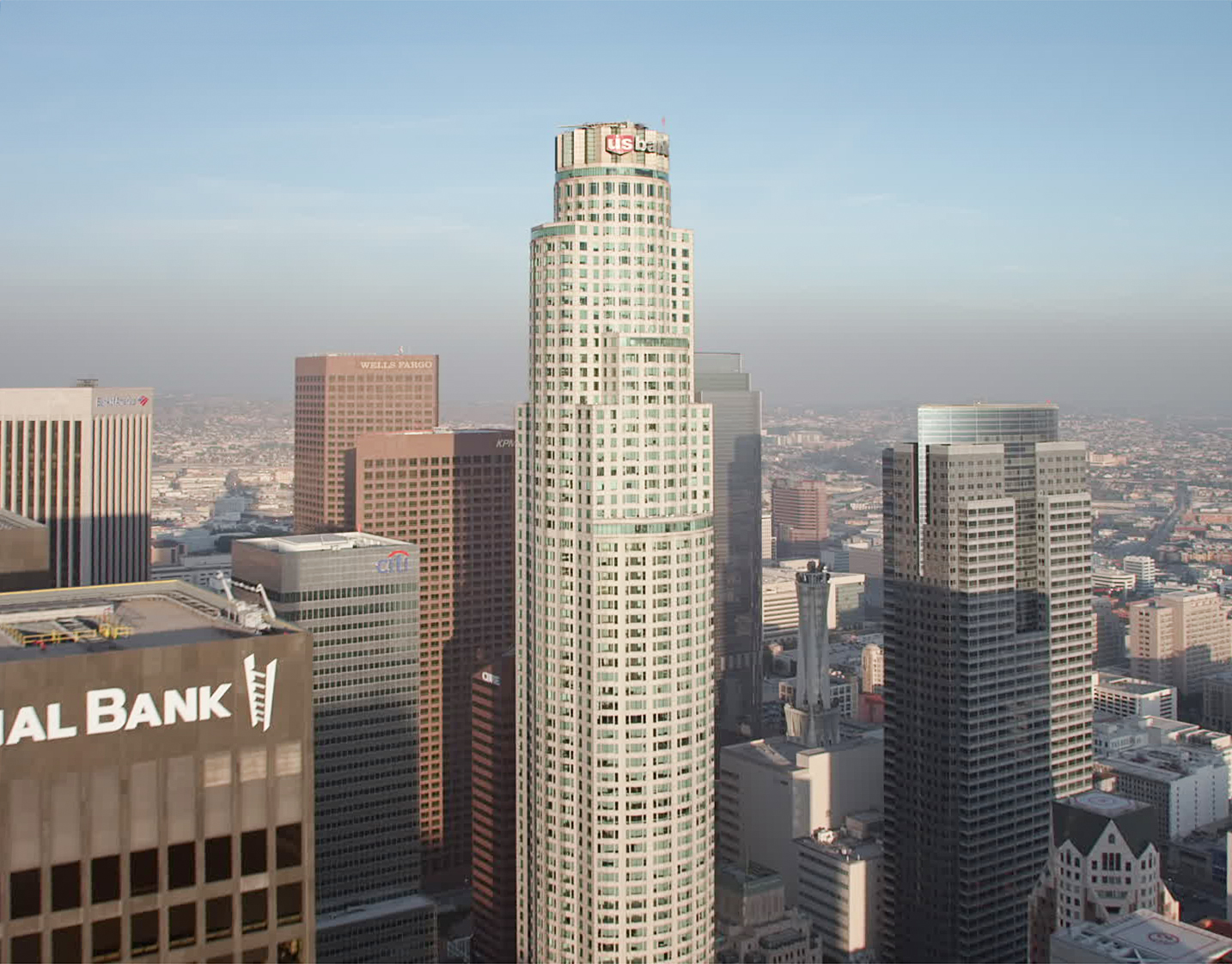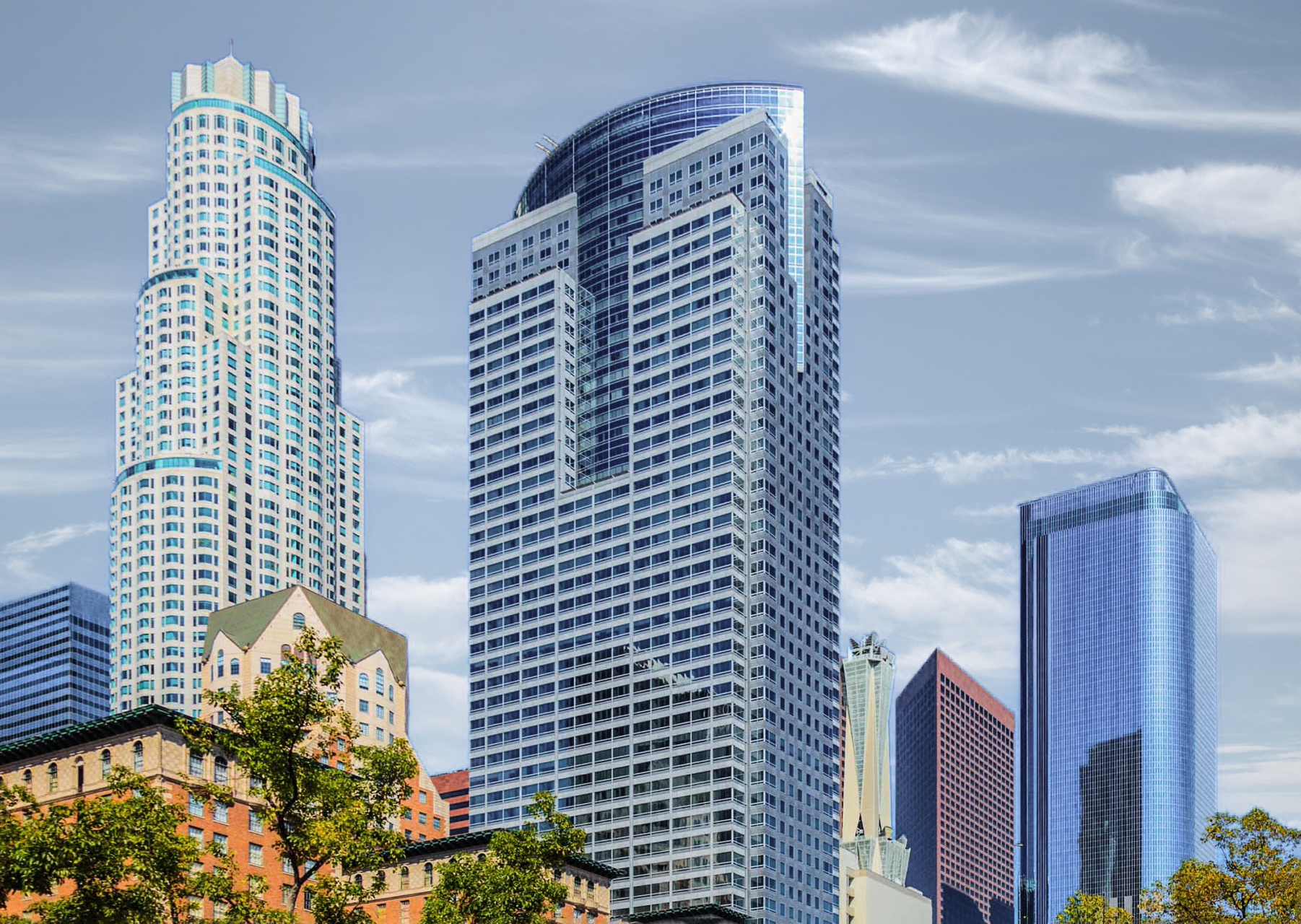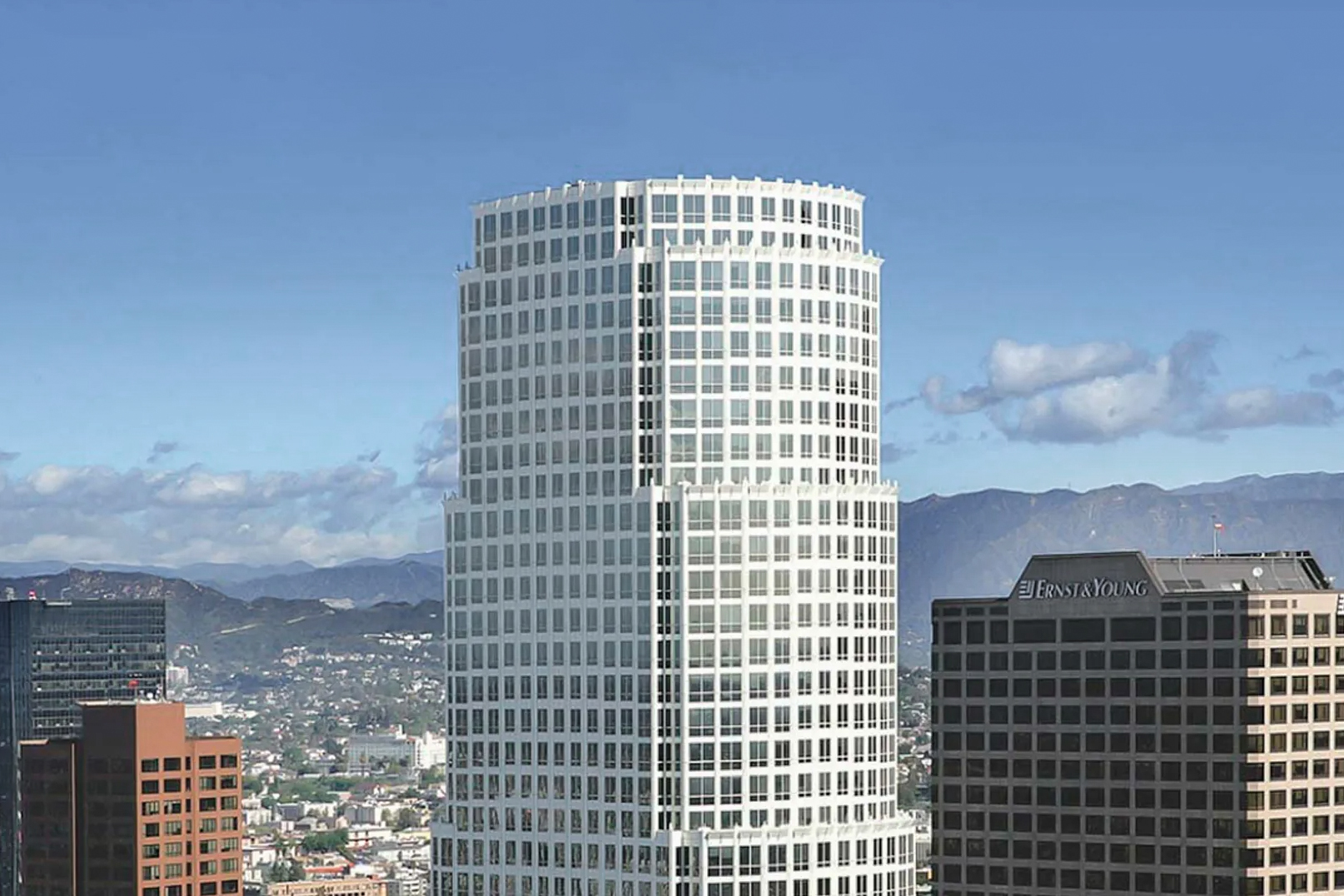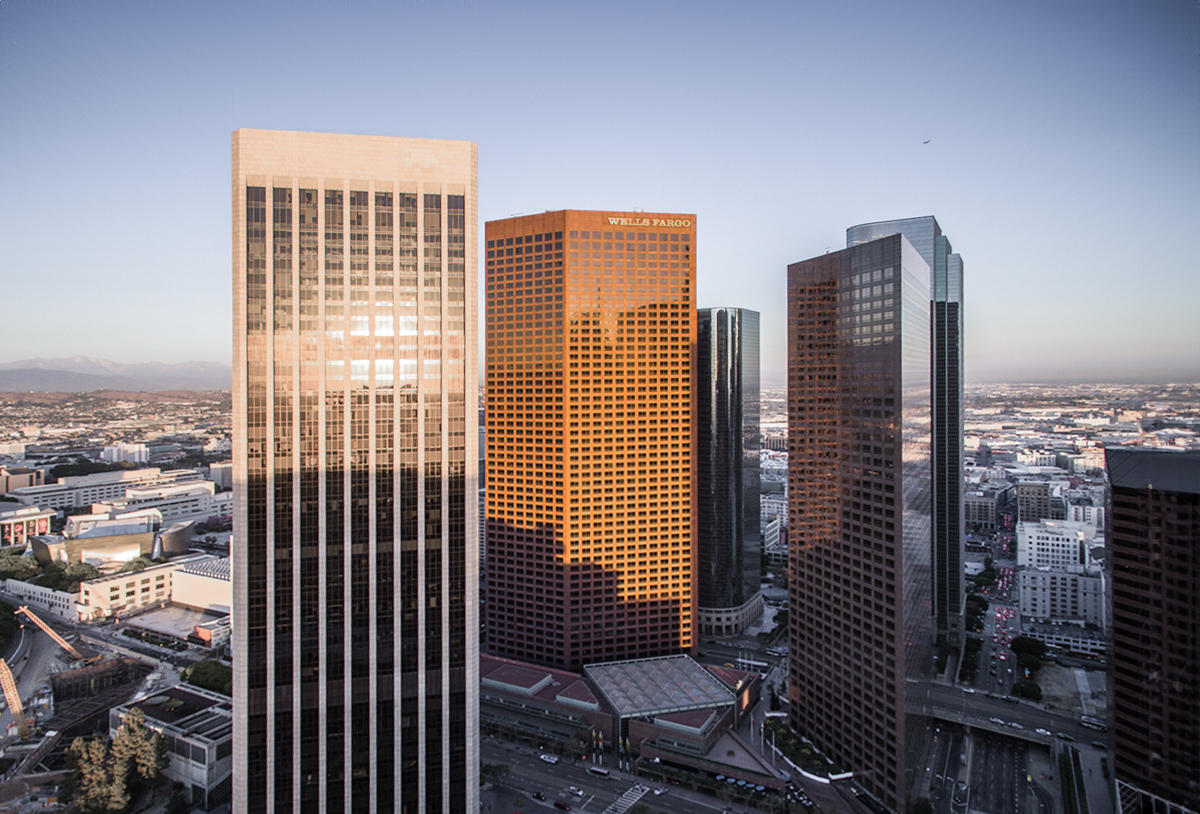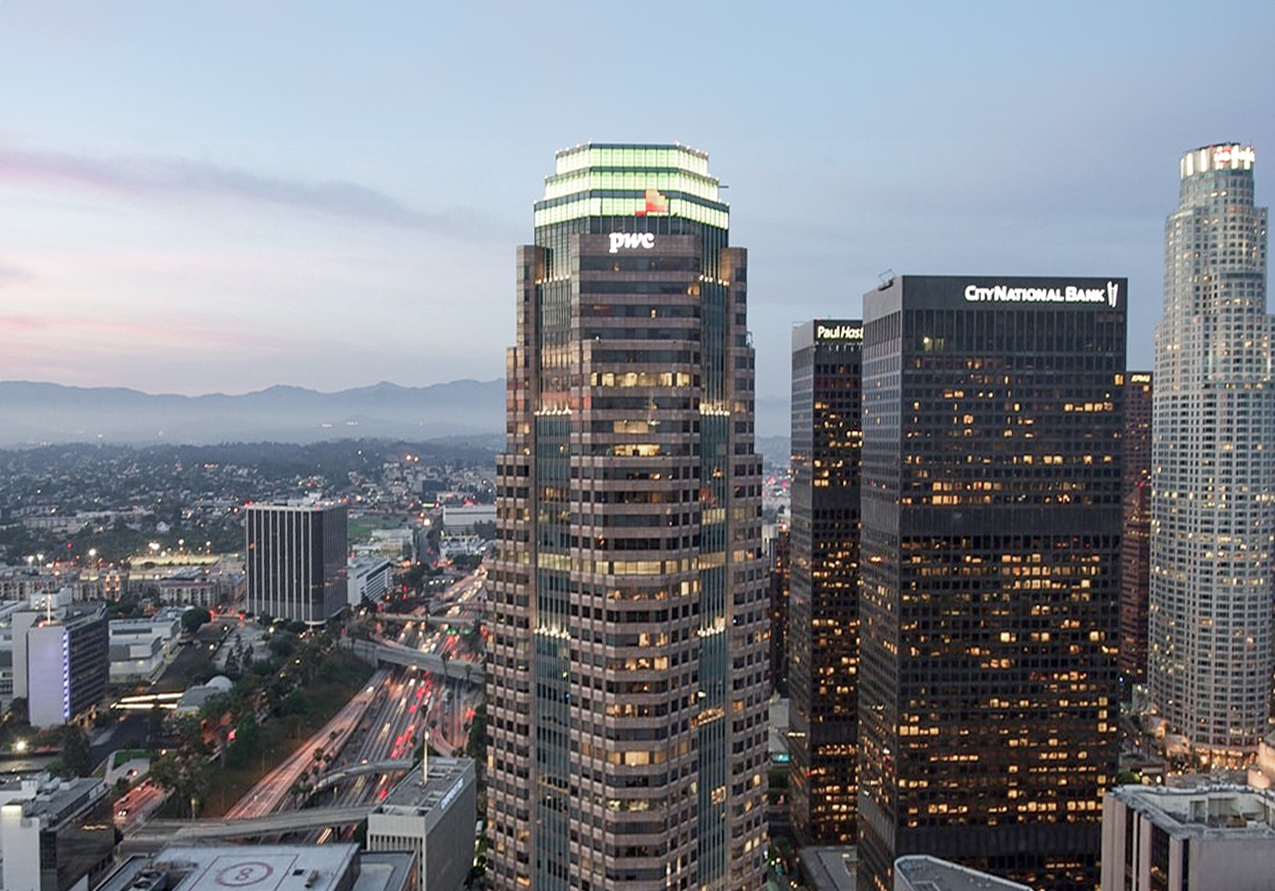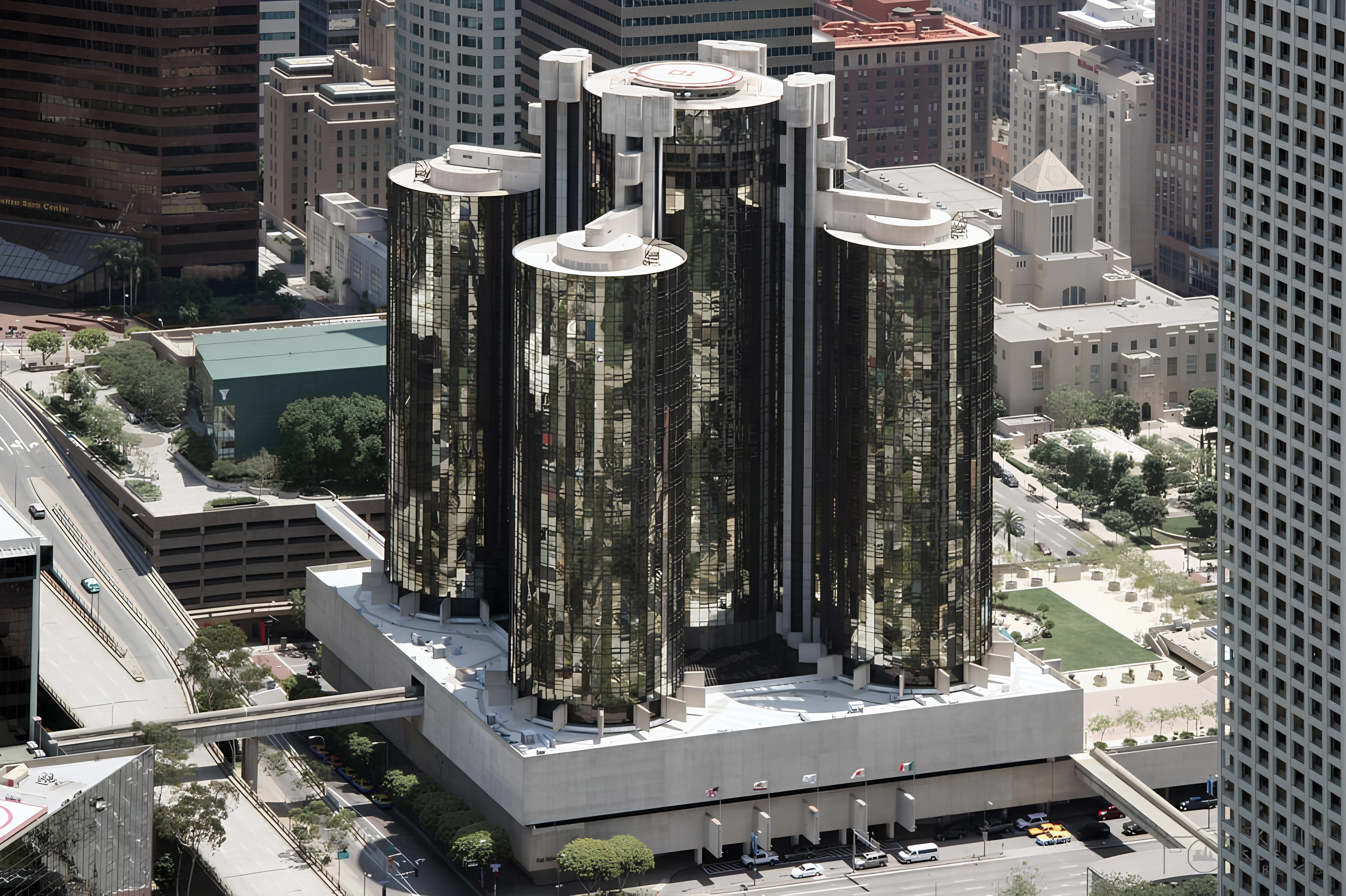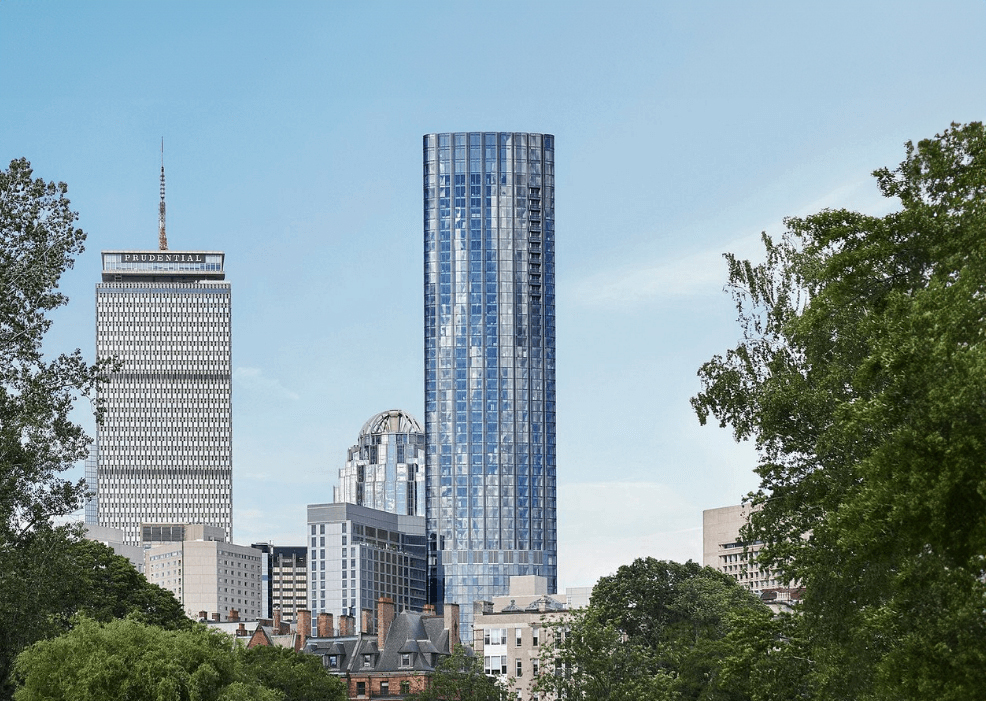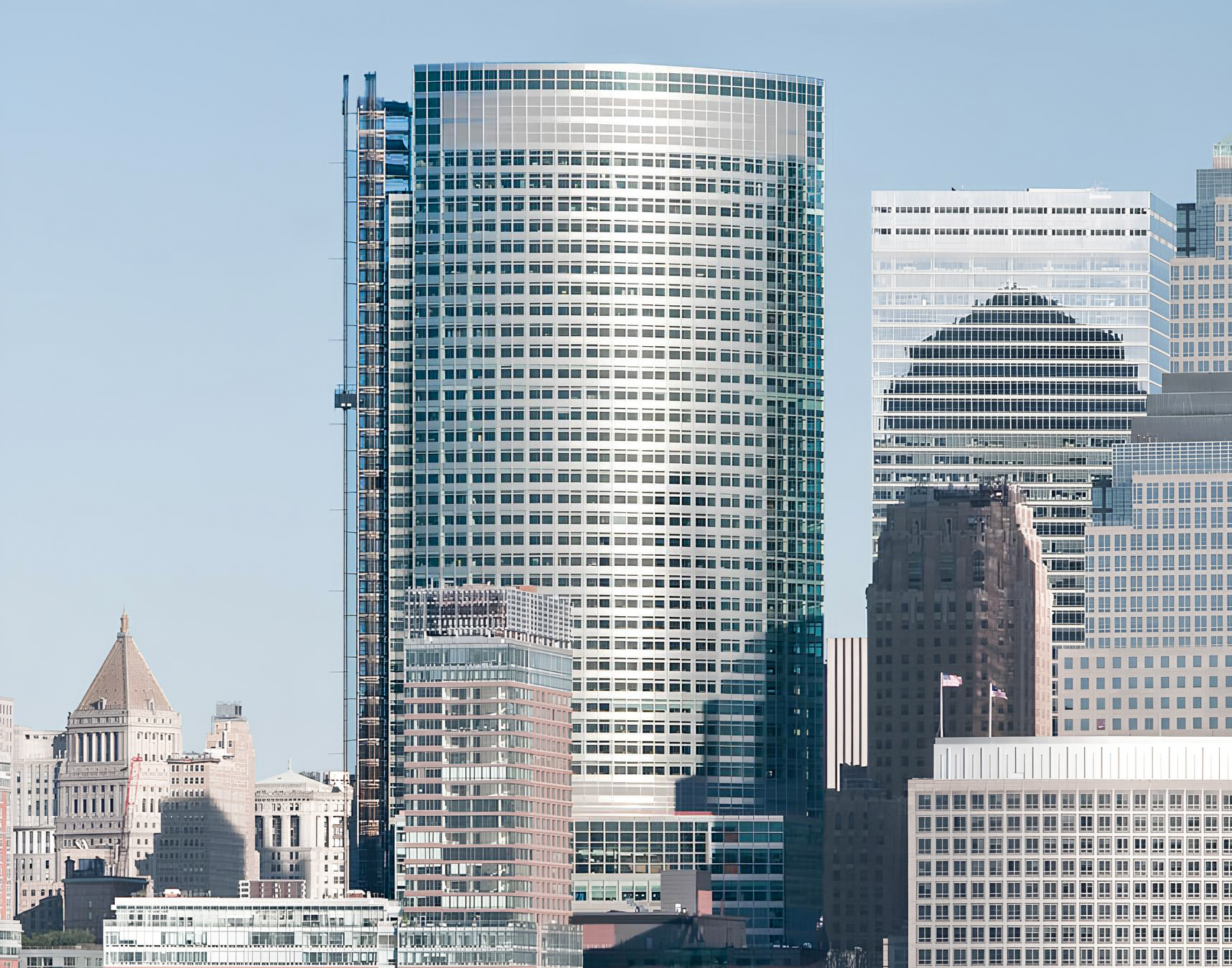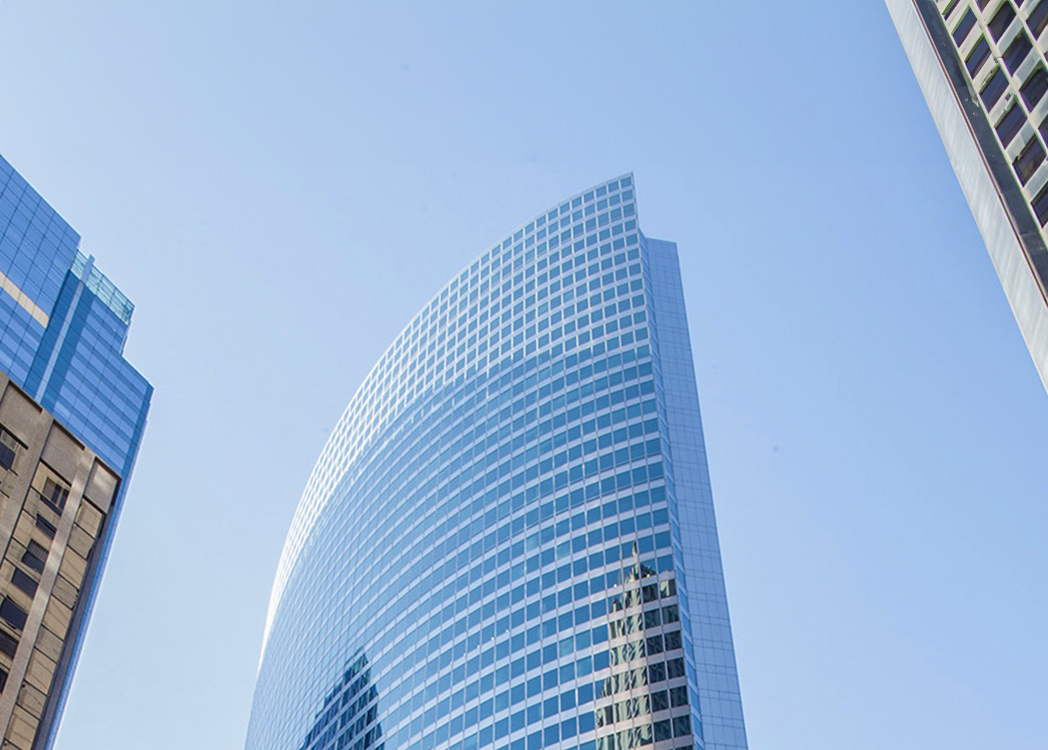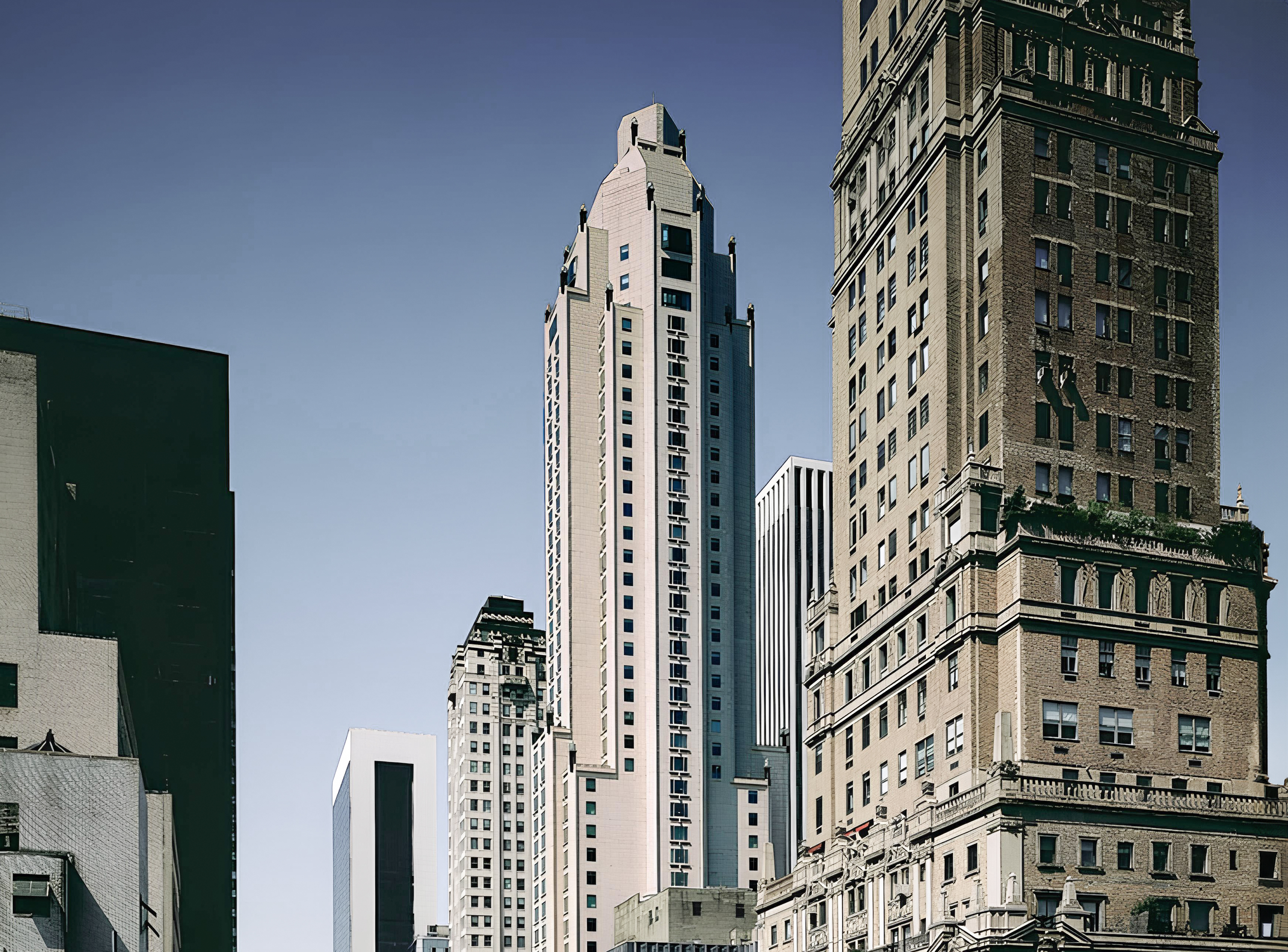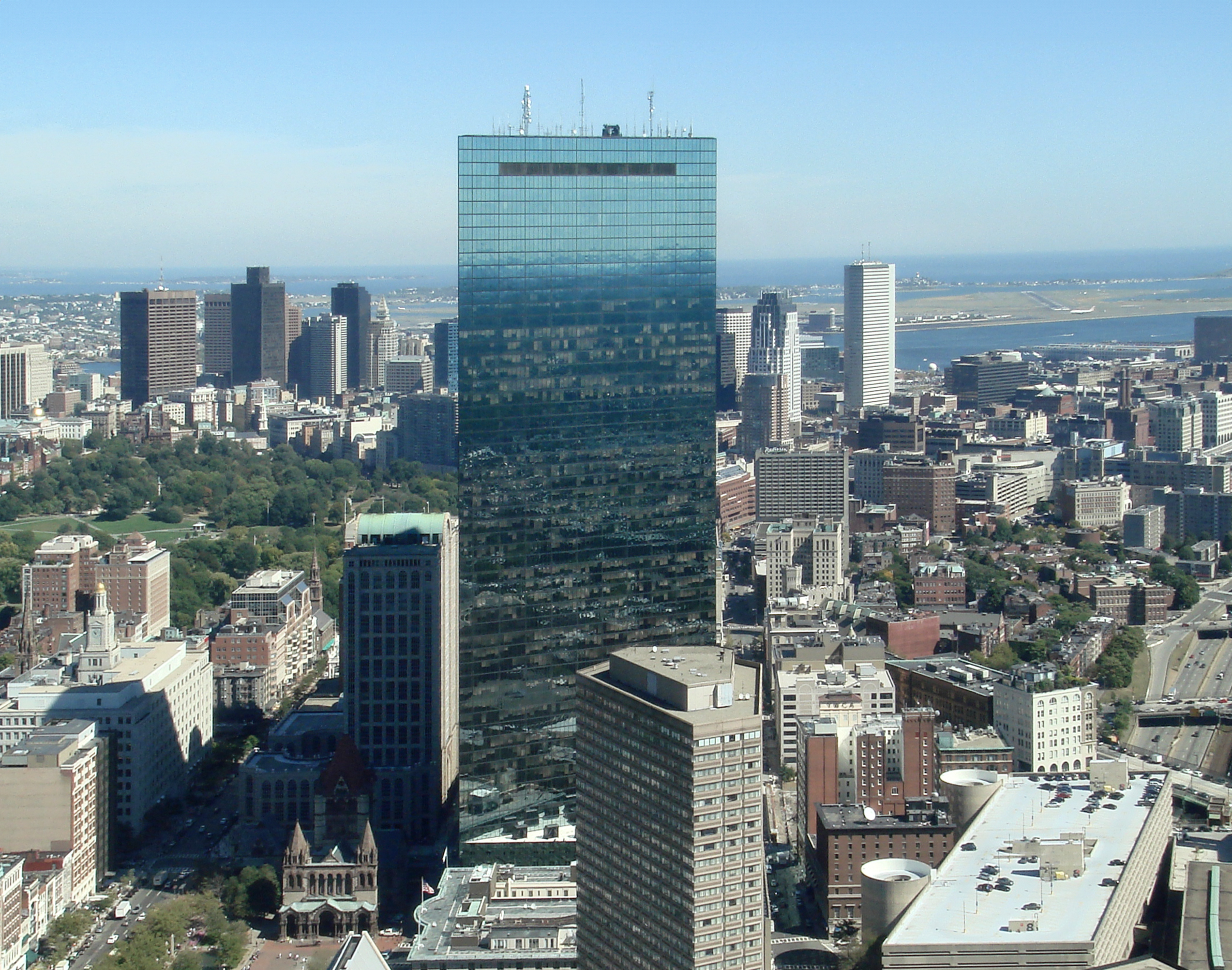The U.S. Bank Tower is a Postmodernist skyscraper designed by Pei Cobb Freed & Partners, with Henry N. Cobb as lead architect, in association with Ellerbe Becket, and built between 1987 and 1989, for a reported $350 million dollars, in Los Angeles, CA.
U.S. Bank Tower is not the only name you might know this building by though. It is common for companies to want to attach their names to iconic buildings when they move in, or for the general public to come up with nicknames, and this one is no exception. The building has changed names several times over the years, and is also known as:
- Library Tower between 1989 and 1996.
- First Interstate Bank World Center between 1996 and 2003.
Its precise street address is 633 West Fifth Street, Los Angeles, CA. You can also find it on the map here.
The U.S. Bank Tower has received multiple architecture awards for its architectural design since 1989. The following is a list of such prizes and awards:
- Outstanding Project Award in 1989
- Beautification Award in 1990
The tower's volume is the result of merging a cylinder with another right-angled volume. As the tower rises 4 setbacks further shape the volume, that culminates in a glass crown that illuminates at night.
At the time of its completion in 1989 the U.S. Bank Tower incorporated solutions that were quite advanced at the time, these included the largest high-resolution video screen in any office building .
The building underwent a major restoration in 2017. The architect commissioned to undertake this restoration was Jeffrey Beers, A + I Architecture.
